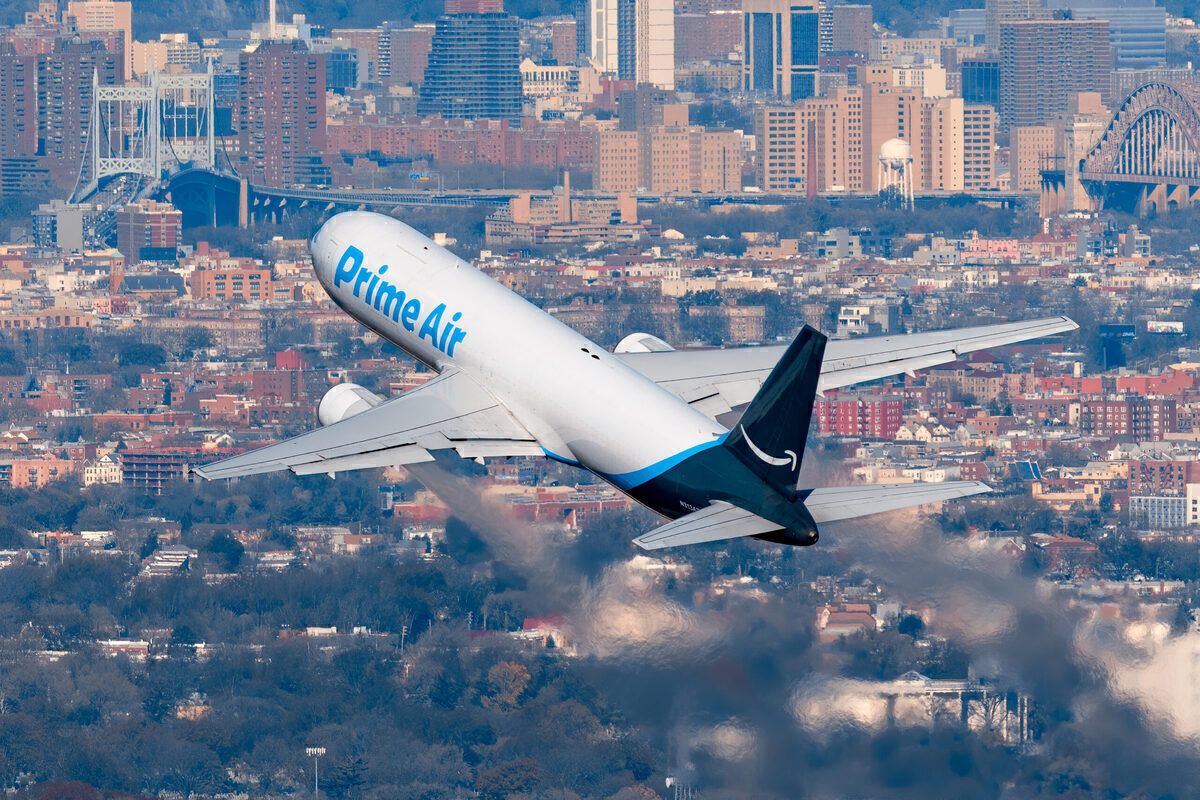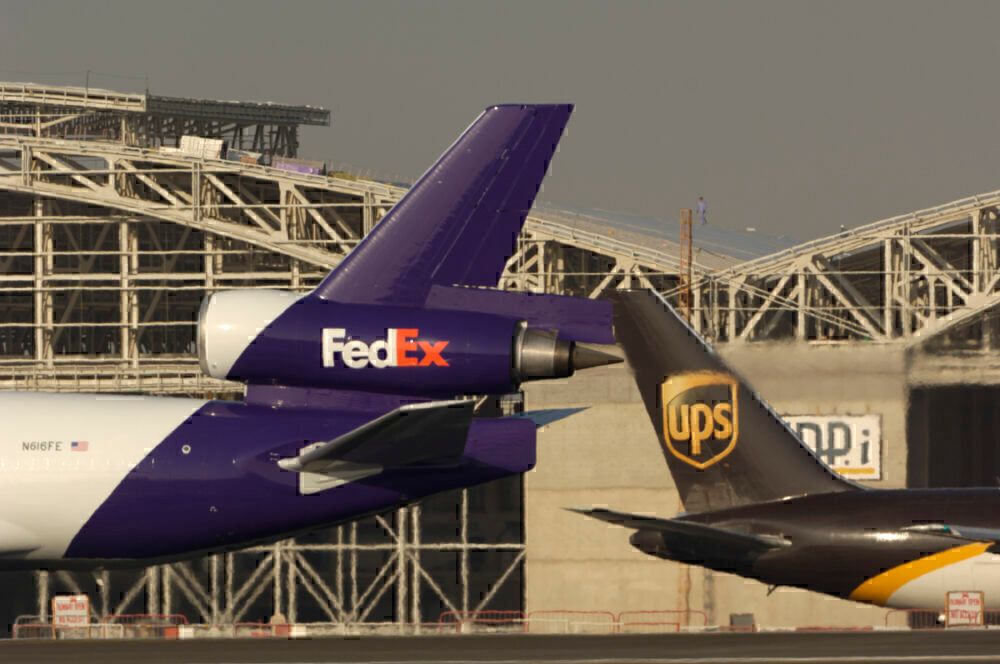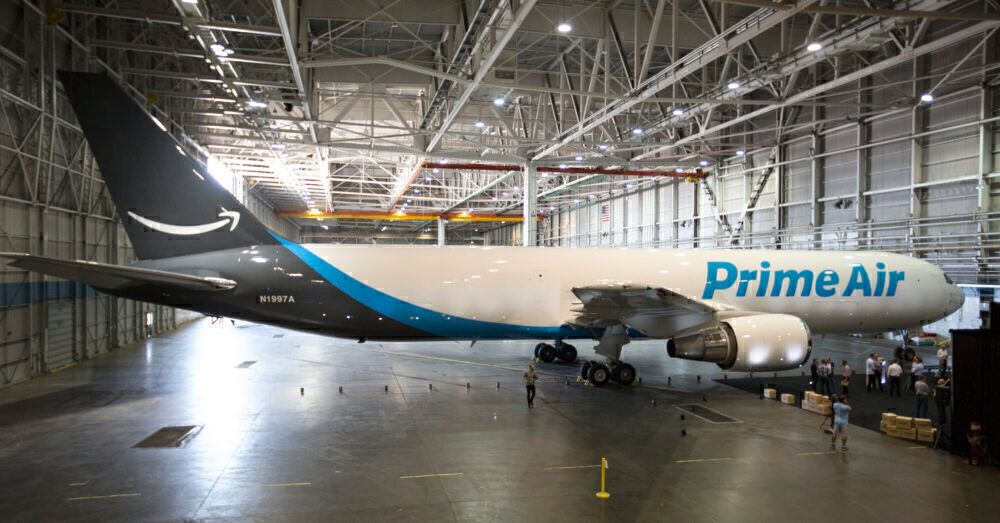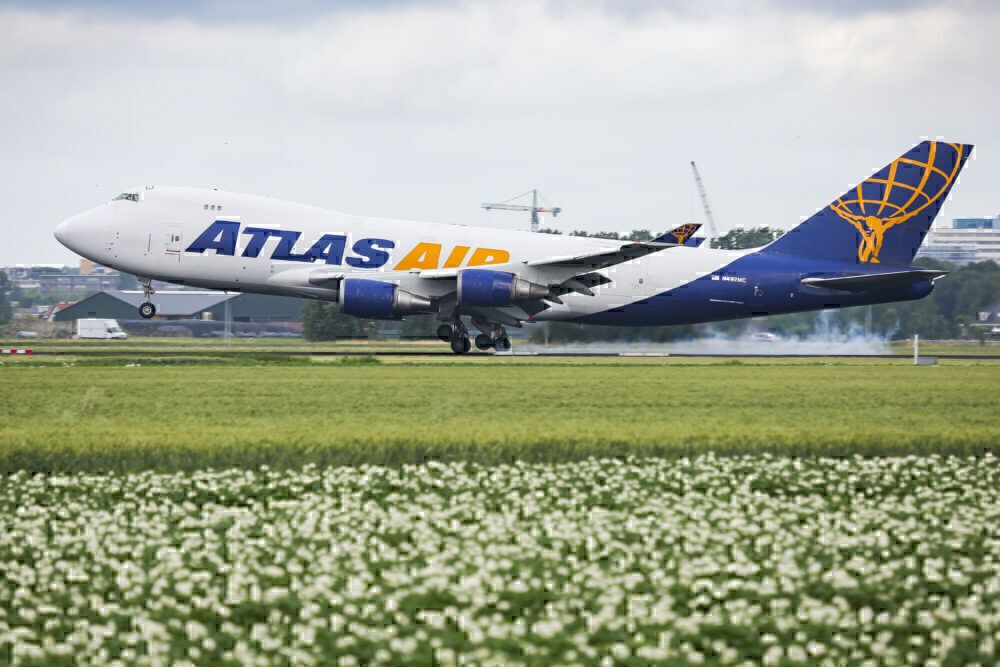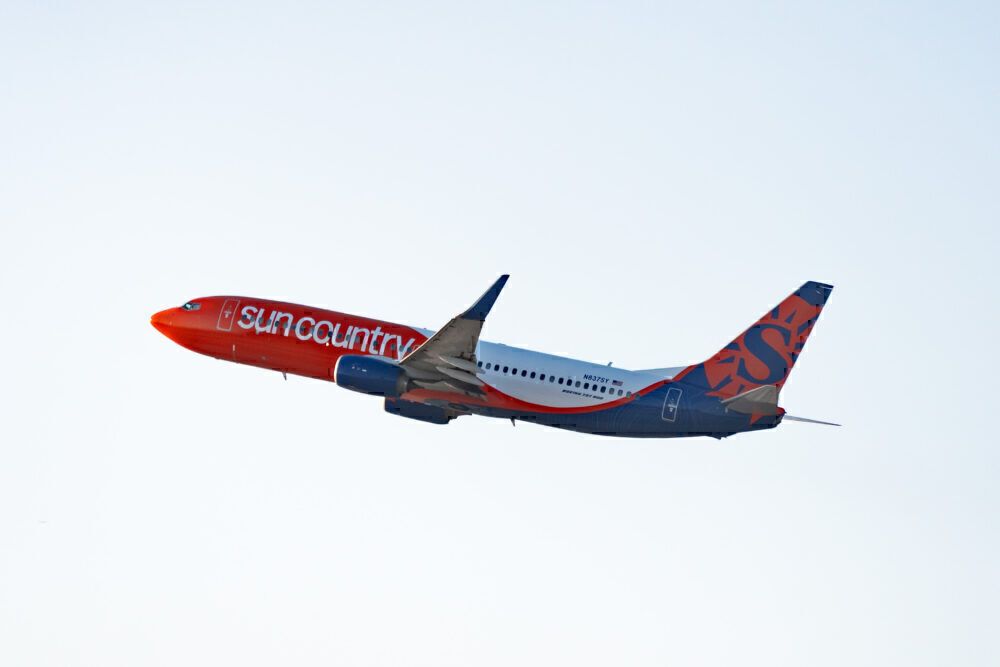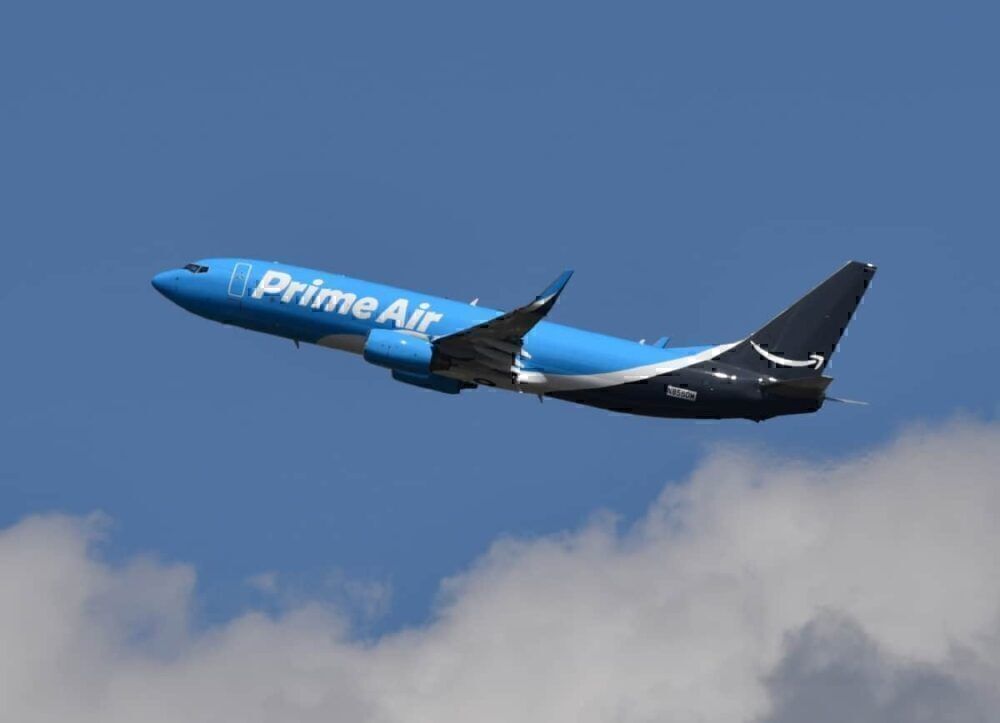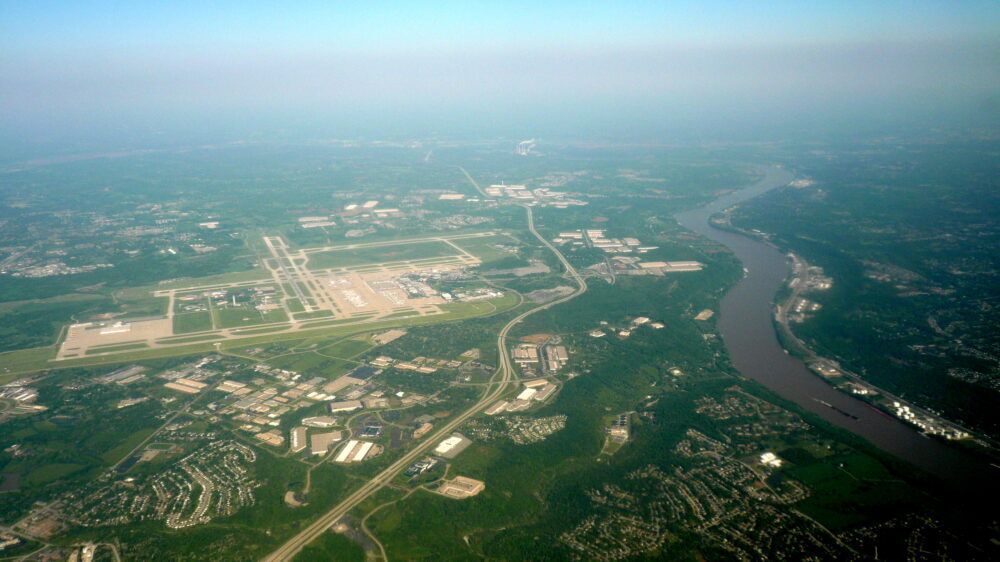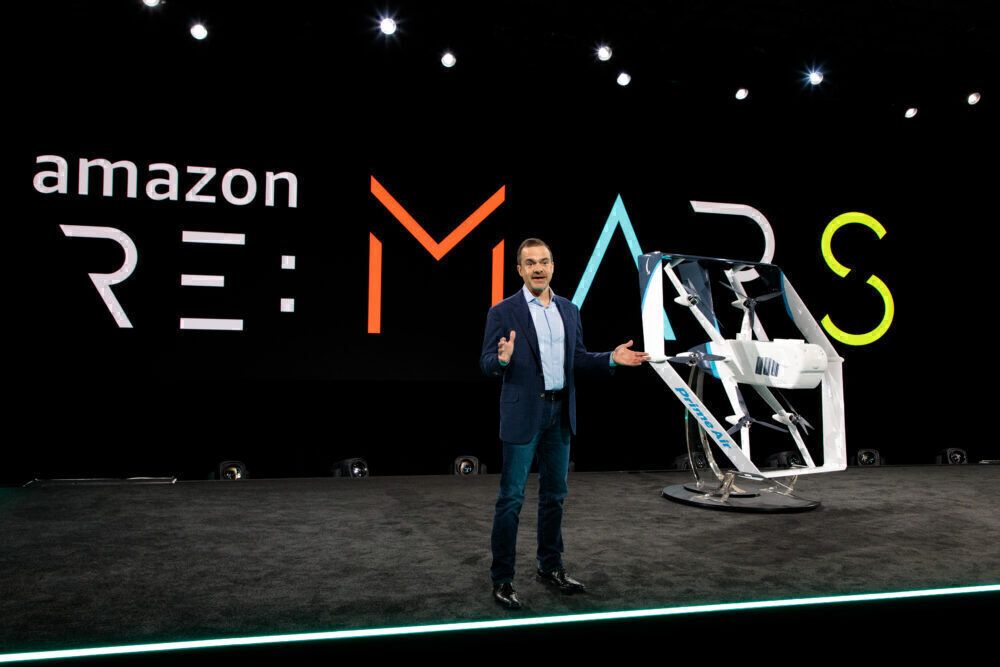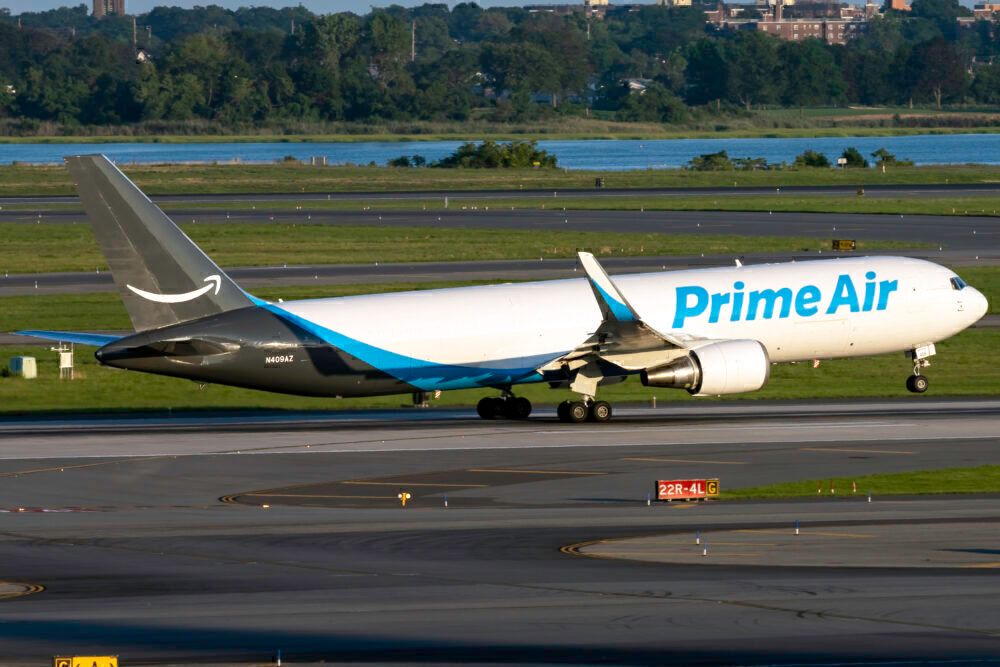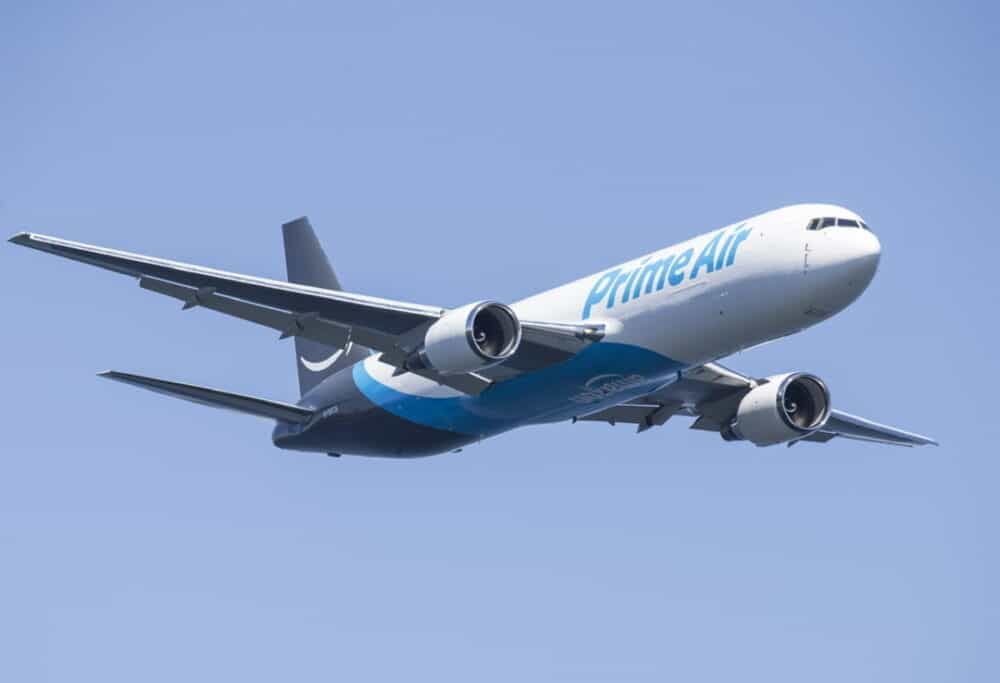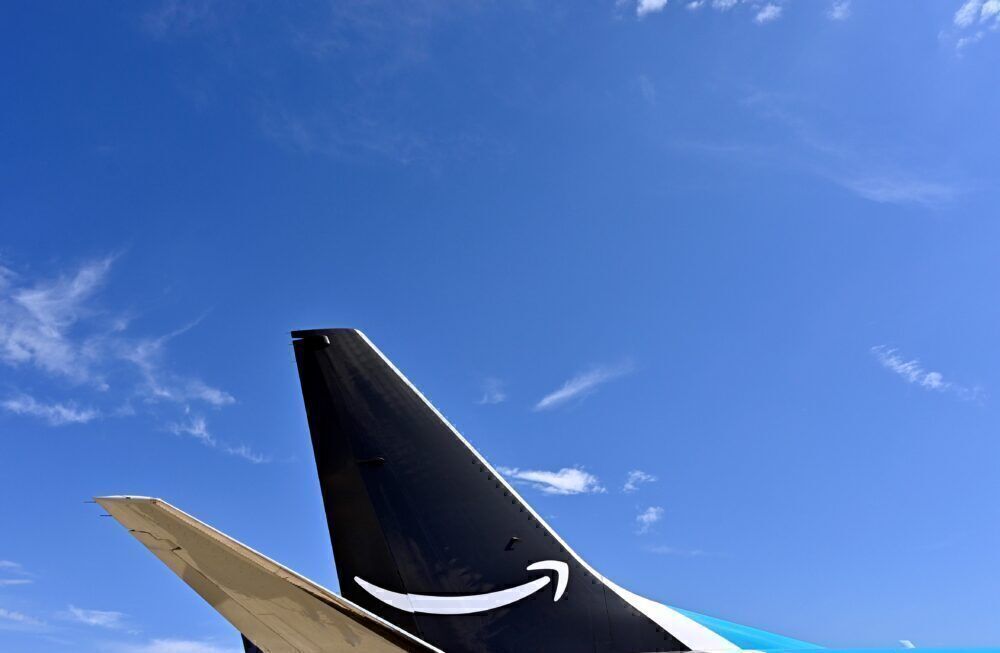Amazon Air has to be one of the fastest expanding airlines yet. It started only in 2015, but with Amazon already well-established as a global leader in e-commerce, it has grown quickly to support its logistics. At the start, aircraft were leased, but more recently Amazon has been buying its own aircraft. Different aircraft types, changes in ownership, new bases, and separate drone operations are all pushing the airline forwards.
Origins of Amazon
Amazon needs little introduction, as one of the largest tech companies in the world. It started in the US in 1994 as an online book marketplace. It went public after just three years and began overseas expansion the next year. Products offered have expanded continuously.
Alongside this growth in locations, products, and customers, Amazon has expanded its logistics infrastructure. This began with large distribution centers in the US. It took more control of shipping through its Amazon Logistics division. This sees Amazon partner with other companies to operate Amazon-branded vehicles in several countries.
Air operations, though, remained outsourced to freight carriers such as UPS. Taking more control of its air freight was a logical next step.
Starting Amazon Prime Air in 2015
Talks began about operating aircraft towards the end of 2015. As reported in The Seattle Times at the time, Amazon wanted to avoid delays faced when using other carriers and saw managing its own operations as the best way.
Amazon started quickly (slow expansion has never been part of its business model!). Instead of establishing its own airline and applying for an Air Operator’s Certificate, it chose to lease aircraft and let other companies operate them under the Amazon brand.
It held talks with several companies over leasing aircraft, including Air Transport Services Group (ATSG), Atlas Air, and Kalitta Air. It began a trial in November 2015 with ATSG, using five Boeing 767 aircraft from a base in Wilmington, Ohio.
By March 2016, things had progressed well, and Amazon agreed on a deal to lease 20 Boeing 767 aircraft from ATSG. These were operated by ATSG airline Air Transport International and branded as Prime Air. Amazon also acquired the rights to purchase up to 19.9% of ATSG’s shares over the next five years (which it later exercised in March 2021).
Growing the freight operation – fleet and bases
More 767 freighters
Just as Amazon grew rapidly, so has the freighter fleet. New aircraft have been added continuously, both with ATSG and with a second operator, Atlas Air.
An agreement with Atlas Air was reached in May 2016, when Amazon leased a further 20 767s (the same number as agreed with ATSG). These were significant deals for both companies as, following the deals' announcement, ATSG’s stock price rose 24%, and Atlas Air’s rose 26%.
Both these agreements have led to the 767 fleet growing continuously since mid-2016. The leasing deal with ATSG was expanded by a further 10 aircraft in December 2018 and 12 more in May 2020.
Data on the fleet from Planespotters.net shows how these aircraft entered service:
- Four aircraft were operational by the end of 2016 (three with ATSG and one with Atlas Air)
- 15 joined the fleet throughout 2017(five with ATSG, 10 with Atlas Air)
- Eight were added in 2018 (all with Atlas Air)
- Eight more in 2019 (all with ATSG)
- And five in 2020 (all with ATSG)
Adding the 737-800
In April 2019, Amazon Air began adding smaller 737-800 freighters. In the US, these are operated by Southern Air and Sun Country Airlines.
The first five aircraft were introduced with Southern Air in 2019. Three more entered service in 2020. Southern Air is a cargo carrier owned by Atlas Air Worldwide Holdings. Other than Amazon’s 737-800s, it also operates the 777F for DHL.
Ten more 737-800 aircraft came onboard in May 2020 with Sun Country Airlines. This is Sun Country’s first (and only) cargo operation – coming at a time, of course, when passenger services were suffering due to the COVID-related slowdown.
The 737s have served lower capacity routes. This includes a new service to Alaska, with Sun Country’s 737s starting flights to Fairbanks in 2019 and Anchorage in early 2021. And with expansion into Europe in 2020, two more 737-800 have entered service, operated by ASL Airlines Ireland.
With a total fleet in March 2021 of 22 aircraft, this represents over a third of the total 737 Next Generation freighters. This conversion to freighters has worked well for Boeing, with more than 150 orders and commitments from several operators.
And growing its bases
Along with fleet increases, Amazon has also expanded its operation bases as it takes more control of its logistics.
Amazon operates both hub-based flights as well as point-to-point services on other routes. In 2017, Amazon announced that Cincinnati/Northern Kentucky International Airport would become the main hub for Amazon Prime Air, with a $1.5 billion investment.
It has since added gateway facilities at over 35 US airports, including Fort Worth Alliance Airport (TX), Riverside (CA), and Wilmington (OH). These have dedicated parking and loading areas for Amazon aircraft to speed operations. It also has remote hubs in Alaska and Hawaii. With such expansion, Amazon Air is starting to look like a competitor to major carriers like UPS and FedEx, although it is still long behind in fleet size or bases.
And in late 2020, Amazon opened its first European facility at Leipzig-Halle Airport in Germany. This is Germany’s second-largest freight airport, Amazon will operate a dedicated facility there, employing 200 staff and basing two 737-800 freighter aircraft there (operated by ASL Airlines).
No further expansion in Europe has been announced, but it would seem likely given the expansion in the US.
Re-branding as Amazon Air
You may have noticed in all the images we have used that aircraft are branded as Prime Air. This is confusing as the company is actually now known as Amazon Air.
By the end of 2017, Amazon was ready to re-brand the operation. This has to be one of the fastest re-brandings for any air operator. But Amazon was starting a drone delivery service, which suited the Amazon Prime Air brand. The freight operation became Amazon Air.
This drone service is in the trial stages, but if it proceeds anything like the freighter trial, we should expect quick results. Simple Flying looked at this in late 2020, as the FAA had designated Amazon Prime as an ‘air carrier’ and given the approval to start tests under strict conditions and at an undisclosed location. It is something of a two-way trial, as the FAA also has a lot to develop in the areas of drones and autonomous flights.
Adding its own aircraft
Growing through leased aircraft worked well for Amazon Air, but it has now started taking even more control. The first sign of this came in September 2020, with Amazon registering its first owned 767 (registration N503AZ). This was formerly operated by WestJet, and Amazon has since confirmed the purchase of four such 767s from WestJet.
It added seven more aircraft in January 2021. These 767s were acquired from Delta Air Lines and are expected to enter service from 2022 after conversion.
In a statement in January 2021, Sarah Rhoads, Vice President of Amazon Air, explained the move:
“Our goal is to continue delivering for customers across the U.S. in the way that they expect from Amazon, and purchasing our own aircraft is a natural next step toward that goal. Having a mix of both leased and owned aircraft in our growing fleet allows us to better manage our operations, which in turn helps us to keep pace in meeting our customer promises.”
Amazon Air acquired its own Part 135 Airline Operations Certificate (AOC) just days before the first announcement in September 2020. This is mainly for its drone operations, though, and other airlines will continue to operate Amazon Air’s owned aircraft.
Buying shares in operators
As part of its plans to take more control of freight, Amazon has agreed on warrants to purchase minority stakes in the two operators of its 767s.
In March 2021, Amazon paid $131 million to acquire close to 13.5 million shares in ATSG (giving it close to a 20% stake). It has further warrants in place that could see its share increase to as much as 39.9% in the future.
And with Atlas Air, Amazon exercised warrants to acquire shares in October 2020 and January 2021. It has sold some of these shares, however, and its overall stake remains under 5%.
As these relationships deepen, the reliance on other companies lessens. In June 2019, for example, FedEx ended its US shipping contract with Amazon.
200 aircraft by 2028?
In March 2021, Amazon Air’s operational fleet stands at 67 aircraft – 45 767-300 and 22 737-800 aircraft (according to Planespotters.net).
This is set for further expansion, though. Amazon Air’s purchased 767 are due to enter service throughout 2021 and 2022. And with reduced demand in aviation continuing, it would not be difficult to find more aircraft – owned or leased.
A report published by the Chaddick Institute for Metropolitan Development in 2020 (and discussed by Air Cargo News) predicts that the fleet will grow to 200 aircraft by 2028. This is backed up by the actual expansion rate seen to date and the capacity at Amazon’s hub facility in Cincinnati.
The report notes that some of this expansion could be with smaller aircraft, such as twin turboprops. This is not something we have seen so far from Amazon, but it is a model used by other airlines such as FedEx Express.
Further international expansion also seems likely. Amazon Air already has its first European base in Germany. Simple Flying looked at rumors in late 2020 that Amazon was also behind a new startup airline in Brisbane, Australia. This is not confirmed but has strong support and makes sense for its expansion in the region.
Amazon Air has seen rapid expansion over the past six years. This is hardly surprising given Amazon's similarly fast growth in recent years. Where do you think it will head next with aircraft and base expansion? Feel free to discuss this in the comments.

